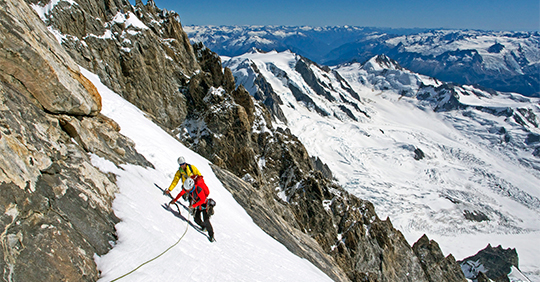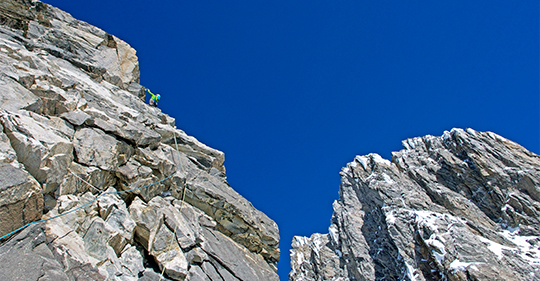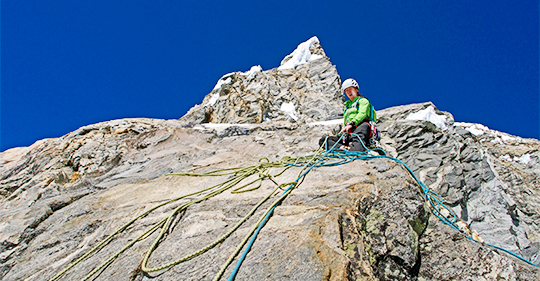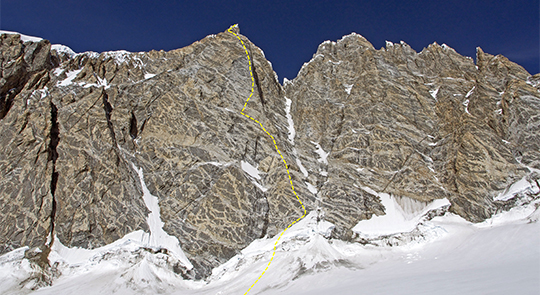
International team completes line on the highest mountain wholly within British Columbia, Mt. Waddington.
From August 18 to 19, Paul McSorley, Ines Papert and Mayan Smith-Gobat completed a two-day ascent of Mt. Waddington’s Southwest Buttress to reach its Northwest Summit (4000m). Two parties had previously attempted their 20-pitch 800-meter route, rated 5.11+ WI3 M5 ED1.
Traveling by helicopter McSorley, from Squamish, B.C, Papert, from Bavaria, Germany, and Smith-Gobat, from Christchurch, New Zealand, arrived on the Dais Glacier on the southwest side of the Mt. Waddington massif. From there, McSorley saw their line jutting above camp: “An 800-meter rock buttress jacked out of the glacier like a giant, petrified shield,” he said.
On August 18 the trio left camp at 4:30 a.m., ascending steep snow and crossing a bergschrund to reach the base of the rock wall. McSorley led the first block of four moderate pitches before Smith-Gobat took the sharp end followed by Papert. “On the crest of the buttress, the rock quality became superb and the sun revitalized our bone-chilled bodies. Our line unfolded above, yielding stiff, technical rock challenges and spicy ridge and mixed climbing,” McSorley said. By 6:00 p.m. the team reached the summit slopes. “The final few hundred meters played out like a power ballad and the tippy top was indeed one of the wildest places any of us had ever been.”


The trio bivied on the descent and arrived at their base camp the following morning. That evening a helicopter picked them up and whisked them back to civilization.
Sean Easton, Craig McGee and Eammon Walsh first attempted the route in 2005, ascending eighty percent of the line before retreating because of route-finding challenges, loose terrain, cold and a developing storm, reported Don Serl in the 2006 American Alpine Journal. In 2011, Jason Kruk and Tony Richardson made it two pitches from the top before going down.

[Photo] Paul McSorley
Instead of taking a helicopter, Kruk and Richardson chose rafting the Upper Mosley River and bushwhacking for four days to reach their objective. They retreated when the sun’s heat melted the rime ice they were ascending. “Ironically it was good weather that turned us around,” Kruk told Alpinist last January when we asked him details about this image. He described the climbing as: “Spectacular mixed ground [with] wild rock and rime formations. I have dreams about this stuff.” Read the story about their attempt here.
Parties usually arrive at the peak by helicopter, saving weeks of foot travel. McSorley calls Richardson and Kruk’s method to reach the base of Waddington “truly sporting.”
Mt. Waddington’s Northwest Summit is eighteen meters shorter than the peak’s true summit.

[Photo] Paul McSorley